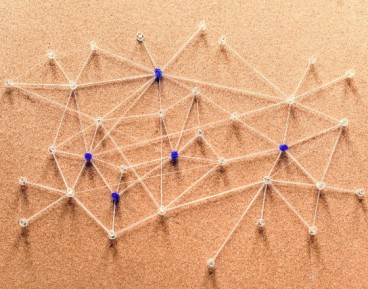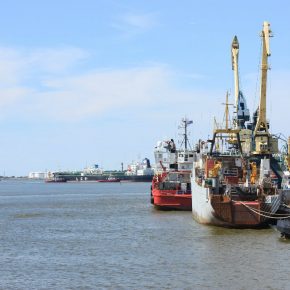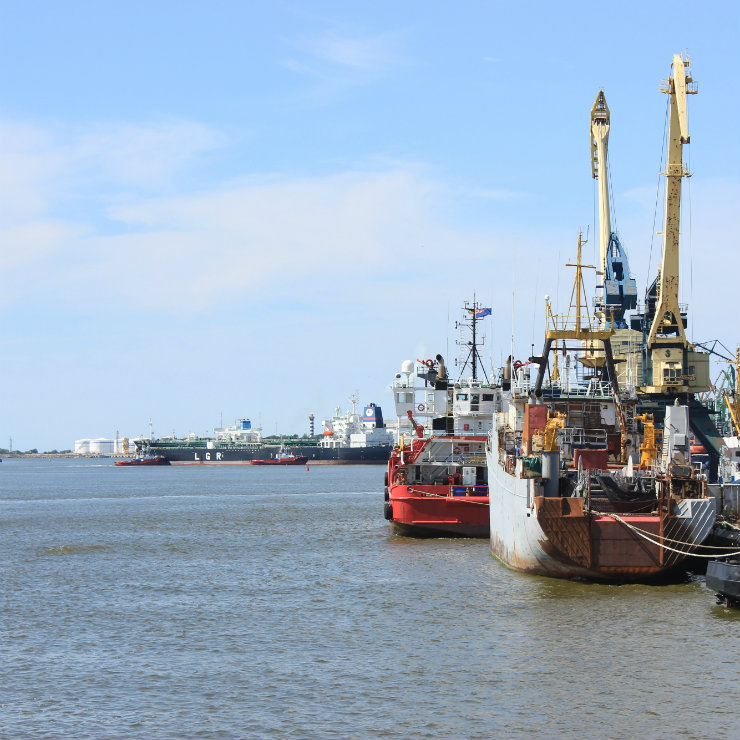Tydzień w gospodarce
Category: Trendy gospodarcze

Klaipeda, Lithuania (magro_kr, CC BY-NC-ND)
Tomasz Stępień, CEO of Gaz-System said “We are time-sensitive and rely on the thorough completion of the submarine gas pipeline. We hope that the work we’ve done up to now, as well as the experience of our contractor will contribute to the success of the entire project. In August the first geophysical and environmental work will begin in the Baltic Sea. They will enable us to settle the exact path of the pipeline.”
The gas pipeline will link the Norwegian gas fields of the North sea and proceed to the Baltic and Poland via Denmark. It will also have a reconnection capacity that will enable gas to be channeled to Sweden and Denmark. It will receive gas from the North Sea via the Norwegian-Danish link on the West coast of Denmark and transport it via an upgraded Danish overland link to a plant in Zealand on the east coast, thence to Polish Świnoujście via the submarine interconnector. From Poland it will be transported by the developed Polish system southwards to the countries of the Three Seas Initiative, the fledgling north-south axis of Eastern European states.
According to Gaz-System’s website the mission will make a “significant contribution to the creation of an internal European energy market. The project is aligned with the objectives of the EU’s energy policy, such as increased competition, integration of gas markets improved security of supplies and effective implementation of sustainable development guidelines.”
The project will also coincide well with the EU North South corridor PCI Project of Common Interest from October 2013 and will fit in with the Polish strategic concept of the Intermarium. The Baltic pipe will connect with the NS Gas corridor in Świnoujście LNG terminal thence to the Czech Republic Sovakia, Hungary and through to the Adria LNG terminal in Croatia.
Much of the project, one that will include interconnectors and inter-system connectors is still in the planning stage but the aims are to increase the integration of regional gas markets, security of supply enable access to new sources of supply (i.e. Norwegian gas for CEE)
The transmission system operators (TSO) must publish a Gas Regional Investment Plan (GRIP) every two years. The Baltic Energy Market Interconnection Plan have just developed their first GRIP. The plan presents an overview of the challenges ahead and covers 2012-2021.
Jan Chadam, former CEO of Gaz System said ‘”The BEMIP GRIP is a great example of a successful co-operation amongst gas TSOs that contributes to the integration of national gas markets into a single well interconnected gas market in the Baltic Sea Region [the region] needs such co-operation which will bring to an end the existing “energy islands”, enhance security of supply and pave the way towards the completion of a diversified ad competitive EU energy market.”
To implement all Baltic Pipes plan the issue of purchasing the floating gas storage facility in Lithuanian Klaipeda have to be resolved. If all three Baltic states contribute to the purchase, there may be a possibility to apply for the EU funding. So far Latvians demand more time to consider, thus the deadline was missed.
Lithuanian Prime Minister Saulius Skvernelis commented “The key condition for securing support is that this has to be a regional project covering the three Baltic states. If one state says that they need another half a year to think and decide we understand that we can’t meet the deadline for this project and have to look for other ways to lower the burden of the terminal’s costs for our taxpayers’.
Discussions on regional gas infrastructure started in 2006. Lithuania, however, went ahead and built its Klaipeda terminal. Later it appealed to Latvia and Estonia to acknowledge the terminal as a regional and thus to receive EU support (it had offered to include Latvian and Estonian terminals in the package). Estonian reluctance was a key, according to the Baltic Course portal, as it was considering building its own terminal in the Gulf of Finland. The Baltic Times reported that Lithuanian foreign ministry advisor Deividas Matulionis said “Unfortunately we have failed to reach an agreement. If needed we can provide information but Latvia has reservations about this project and perhaps we will have to think together with Estonians about what to do next.”
“A two-way deal may be more difficult to sell to the EU. If Latvia decided otherwise we are ready to talk anytime, but today the situation is what it is,” he said and added “Regional agreements are not as easy to achieve as we would like and we have to state the fact that we failed to agree.”
Apart from gas supplies the integration of the electricity system is a priority for the Baltic states energy policy. The question is should this happen via existing links of BRELL (Belarus, Russia, Estonia, Latvia, Lithuania) or building a second Baltic circuit. On this point there is disagreement between Lithuania on the one hand, and Latvia and Estonia on the other. As reported in the portal Err.ee on September Virgilijus Poderys, Chairman of the Lithuanian parliamentary energy commission, said that Lithuania should get ready for an alternative plan. “After the Baltics failed to reach common understanding, Lithuania is thinking over the possibility of going it alone,” he said.
Poderys added “Given how events are unfolding, it’s time for Lithuania to prepare itself for Plan B that is to synchronise with the continental European network on its own, without tying itself to Latvian and Estonian energy plans.” Saulius Skvernelis, Lithuanian Prime Minister, during his last visit in Warsaw, Poland, raised a question on such an agreement with Poland.
Latvia and Estonia don’t oppose these links, but Estonia is in favour of a second link to Poland and a link heading north to the Nordic area. Latvian Prime Minister Maris Kucinskis had stated that the reliability and cost-effectiveness should be the deciding factors in the new system. “The EU single market must be strengthened and the problems within the single market need to be addressed, but not at the expense of competitiveness and productivity,” he said.
Dainius Kreivys, an opposition member of Parliament and member of the parliamentary energy commission, said “Russia is preparing for our synchronisation and for closed operating and it is doing everything to close the BRELL circuit without us. I won’t be surprised if we are cut off in several tears’ time,” he told BNS Baltic News Service. There have been rumours that Russia is preparing to disconnect the BRELL ring that has existed since the Soviet era.
According to the European network of Transmission System Operators (ENTSO-E) Russia is building a new power line near Estonia and Belarus. The Kaliningrad enclave is getting new co-generating (heat and power) plants.
Litgrid, the Lithuanian electricity system operator (and responsible for integration of the Lithuanian system into the European one), would not comment on the possibility of union with Poland but said such an idea had not yet been analysed, but it will investigate the technical feasibility once a political decision had been reached.
On August, the three prime ministers of the Baltic states had agreed on an additional period of two weeks to secure the final agreement on the LNG market. It seemed a formality. Deividas Matulionis advisor to the Lithuanian PM Saulius Skvernelis told BNS “There is agreement in principle to move forward, and there is a clear deadline of two weeks which are needed for certain adjustments of our joint position and a joint address to the EC.”
“There is consensus on all of the principles,” Skvernelis said, “but this will take a bit more time because of all the nuances. Two weeks is a long time in politics to paraphrase Harold Wilson, British Prime Minister in the 1960s.”


